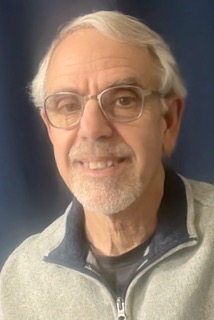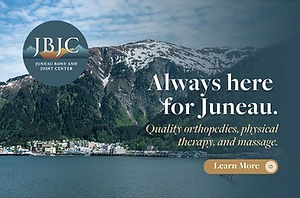DOT’s fake analysis of the Cascade Point project
- Rich Moniak

- 10 hours ago
- 3 min read

By Rich Moniak
In his cover letter attached to the “Analysis of the Proposed Cascade Point Ferry Terminal” Department of Transportation & Public Facilities (DOT) Commissioner Ryan Anderson encouraged “all Alaskans — especially residents of Juneau and the North Lynn Canal communities, to review the findings in full and engage with us in follow-up discussions.”
But the real purpose of the analysis, which is sloppy at best, wasn’t to generate a public discussion about whether to build a new terminal on leased property 28 miles beyond the Auke Bay terminal. It’s to justify a decision Gov. Mike Dunleavy made at least 18 months ago.
The analysis supposedly “draws from data modeling, stakeholder input, historical ridership trends, and fiscal impact analysis to present a comprehensive assessment.” If that were true, then the eight data sources referenced at the end date would be full of information supporting its conclusions. But they’re all either outdated, irrelevant to the specifics of this project, or empty.
Public support and opposition are summarized in nine paragraphs of the report. It doesn’t reference public meetings in Juneau, Haines or Skagway because there weren’t any. And the link to “Legislative Hearings & Public Testimony” leads to a page for live streaming committee hearings that’s entirely void of content.
One of the main concerns is the negative impact to walk-on passengers. That wasn’t even mentioned in the summary. Elsewhere in the document, the author assumes that they’ll have have no objection to paying a one-way, $56 fare for a private shuttle service run by Goldbelt Inc.
The accompanying assumption is there won’t be a public transportation option. So the reason CBJ’s “Capital Transit Information” is listed as a data source isn’t clear. Regardless, the link provided leads to a black page with the heading “Oops, This Page Could Not Be Found!” A subsequent search on the website for Cascade Point turned up nothing.
There’s supposed to be data compiled by the Southeast Conference that’s relevant. The link to it wasn’t helpful either. I found a few Cascade Point documents on their Alaska Marine Highway Reform Project page. But they were preliminary engineering analyses produced by DOT in 2019.
The state and federal webpages listed as data sources for the fuel cost savings that were quantified weren’t useful. Both require visitors to conduct their own searches.
That leaves the three data sources that reside on state DOT webpages. Those links led to other “Oops” pages.
One of those is the DOT’s recent budget reports which wouldn’t be helpful for the fiscal and economic issues related to this specific project.
I was familiar with the others and found them elsewhere online.
“The Economic Impacts of the Alaska Marine Highway System” is an excellent report produced by the McDowell Group in 2016. It doesn’t mention Cascade Point. However, it was amusingly ironic to see it referenced because it justifies an Alaska Marine Highway System (AMHS) budget that Dunleavy refuses to fund.
The AMHS Reshaping Work Group Task Force Report isn’t nearly as detailed as an earlier reshaping report prepared by Northern Economics. Both focused on alternatives to reform the entire system. Cascade Point was a very minor consideration.
Finally, what’s missing from the analysis is the state spending that will benefit private interests.
Goldbelt has been looking for partners to help them develop the site and adjacent property for more than more for twenty years. In March 2024, Dunleavy signed a Memorandum of Understanding with them to build the terminal. He called it “a commitment to see this through.”
Grande Portage Resources Ltd. plans to haul ore from their new Herbert Glacier goldmine to Cascade Point. The Canada-based company was thrilled by the MOU because it takes them off the hook for the cost to develop much of the site infrastructure, improve sections of the highway between the mine and Cascade Point, and widen or replace the Herbert and Eagle River Bridges.
For three years, Dunleavy’s administration consistently misled the Alaska Marine Highway Operation Board about its objectives at Cascade Point. They’ve displayed little to no interest in “listening to community concerns,” as Andersen implied in his letter. And although the shoddiness of this analysis is no surprise, it still deserves the condemnation of every legislator and constituent who value transparency, honesty, and the public mission of the Alaska Marine Highway System.
• Rich Moniak is a Juneau resident and retired civil engineer with more than 25 years of experience working in the public sector.














